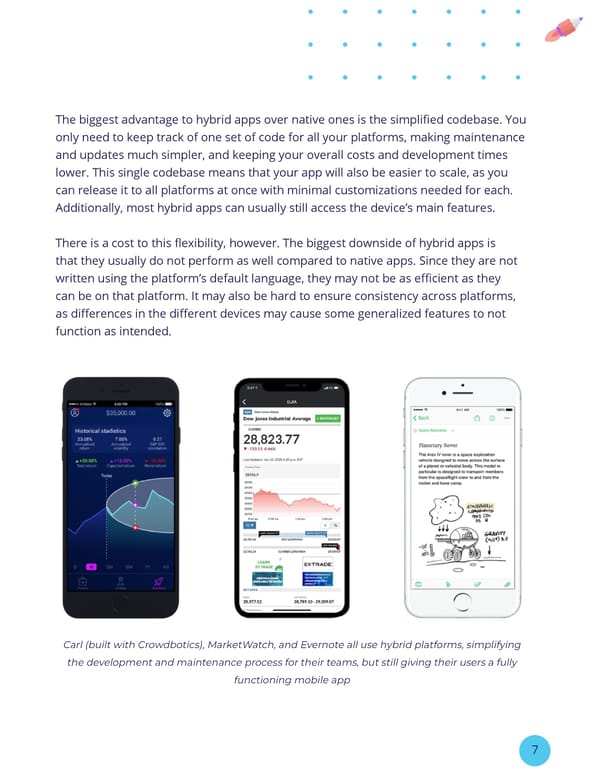The biggest advantage to hybrid apps over native ones is the simplified codebase. You only need to keep track of one set of code for all your platforms, making maintenance and updates much simpler, and keeping your overall costs and development times lower. This single codebase means that your app will also be easier to scale, as you can release it to all platforms at once with minimal customizations needed for each. Additionally, most hybrid apps can usually still access the device’s main features. There is a cost to this flexibility, however. The biggest downside of hybrid apps is that they usually do not perform as well compared to native apps. Since they are not written using the platform’s default language, they may not be as efficient as they can be on that platform. It may also be hard to ensure consistency across platforms, as differences in the different devices may cause some generalized features to not function as intended. Carl (built with Crowdbotics), MarketWatch, and Evernote all use hybrid platforms, simplifying the development and maintenance process for their teams, but still giving their users a fully functioning mobile app 7
 The Non-Technical Founder's Guide to Building an App | CrowdBotics Page 6 Page 8
The Non-Technical Founder's Guide to Building an App | CrowdBotics Page 6 Page 8